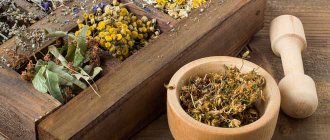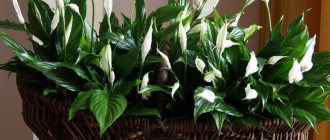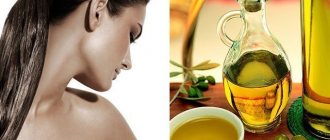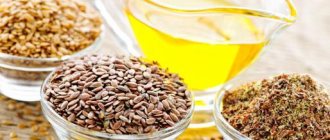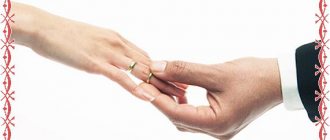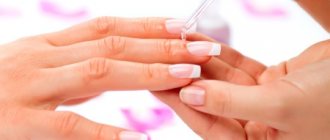This terrible word "inhalation"
Unfortunately, for many of us, the word “inhalation” is almost synonymous with the expression “medieval torture.” This is due to nightmarish memories from childhood: a pan with boiled potatoes, a column of steam pouring out of it, and a thick blanket on the head to complete the picture and the absolute inability to inhale even a sip of unheated air. Instead of a saucepan, sometimes there was a teapot with brewed medicinal herbs. It's time to fight childhood fears! And misconceptions about inhalation. That truly barbaric procedure from the past actually has nothing in common with real inhalation - one of the most effective methods of physiotherapy.
Steam bath for the face and its effectiveness
As one of the stages of the skin cleansing procedure, a steam bath can solve several problems at the same time. Thanks to the unique properties of steam, herbs and oils, the procedure acquires a therapeutic effect.
Main results after exposure to steam:
- Cleansing. The pore walls soften and the contents are easily removed. The epidermis is cleansed of sebaceous deposits and toxins.
- Treatment. Steam with microparticles of therapeutic agents soothes irritations.
- Rejuvenation. Cell regeneration accelerates. A healthy complexion appears. Skin texture improves.
- Health improvement. Inhalation for the respiratory system is carried out.
- Aromatherapy. The nervous system is strengthened.
After several steam bath sessions, the skin becomes smoother, lighter and softer. Cells are saturated with oxygen and restore their functions.
Benefits of inhalation:
- the absorption time of drugs is significantly reduced;
- targeted local effects of drugs on the respiratory system;
- higher efficiency of microdisperse aerosol forms into which liquid drugs are converted in inhalers;
- lower risk of side effects compared to other methods of introducing antibacterial, expectorant, bronchodilator, anti-inflammatory drugs into the body - injections and taking tablets.
Possible side effects
Side effects include increased fever. In this case, inhalations are canceled. The patient continues treatment only after consulting a doctor. In addition, side effects can be expressed by the following symptoms:
- nausea;
- vomit;
- dizziness;
- headache.
Typically, these symptoms can be triggered by medications. The patient may have an allergy or intolerance to the active substance.
How to do inhalations correctly?
To prevent inhalation from turning from an effective method of treatment into a useless or even harmful and painful event, it is enough to follow simple rules, a kind of 9 commandments of inhalation:
- Never carry out inhalation at a body temperature above 37.5 ° C and no earlier than 1 - 1.5 after eating or strenuous physical exertion.
- Nasal and pulmonary bleeding, stage III hypertensive disease, stage III respiratory and cardiovascular failure are absolute contraindications to inhalations.
- Inhalation is a medical procedure, and the time of its implementation must be strictly dosed! The inhalation “dose” is the same as the dose when taking medications. After all, no one would think of drinking the entire package of antibiotics at once.
For children: 1 – 2 times a day for 1 – 3 minutes. For adults: 2 – 3 times a day 5 – 10 minutes.
Better yet, follow the dosage prescribed by your doctor, or, in extreme cases, follow the instructions for using the inhaler.
- Treatment of a runny nose with inhalations requires inhalation through the nose, diseases of the lungs and pharynx - through the mouth. Inhalations aimed at treating the larynx, pharynx, trachea, and bronchi will be much more effective if, after inhaling, you hold your breath for 2 seconds and only then exhale as much as possible.
- Breathing when inhaling through the nose should not be strained; when inhaling through the mouth - see above; Clothing should not interfere with free breathing.
- A small sacrifice for the effectiveness of treatment: inhalation requires silence. During inhalation and for an hour after it, you must remain silent.
- It is not advisable to eat, drink or smoke within an hour after inhalation.
- Simple hygiene: wash your hands before inhalation; if inhalation is performed on a child, so should he.
- Disinfect the inhaler after each use and do not use oil-based preparations in ultrasonic devices.
And it’s completely unnecessary to steam your entire face while taking inhalations. Healing substances are not absorbed through the skin of the face.
Nasal rinsing, rinsing
When rinsing the nose, pathological secretions are eliminated from the surface of the mucous membrane along with microorganisms, allergens, and dust; swelling and inflammation of the mucous membrane decreases; the work of ciliated epithelial cells is corrected, the movement of mucus increases, which increases the protective properties of the nasal mucosa. You can use ready-made solutions that are commercially available (AquaLor, Marimer, Physiomer) or use warm (36-37C) mineral water without gas. It is first necessary to carefully remove swelling of the mucous membrane using vasoconstrictors (Nazivin, Tizin, Otrivin...)
For pharyngitis and sore throats, gargling with a solution of furatsilin and calendula also helps. This helps eliminate pathogenic mucus with microorganisms and pathogenic deposits. The solution should be warm, rinse 4-5 times a day, for 2-3 minutes.
Let me remind you once again, in order not to cause harm and to get the maximum therapeutic effect, all these procedures must be done as prescribed by a doctor.
What types of inhalations are there?
Inhalations are distinguished by temperature:
- up to 30 oC – wet;
- up to 40 oC – warm-humid;
- up to 45 oC - steam.
Inhalation with boiling water is dangerous to health! Steam that is too hot causes burns to the upper respiratory tract. When steam inhalations are carried out correctly, the maximum permissible steam temperature is 52 – 57 oC.
Inhalations are classified according to the type of drug used.:
- dry (powder);
- oil
During dry inhalations, the sprayed medicinal solution is mixed with hot dry air. After the water evaporates, the particles suspended in the air are inhaled and penetrate deep into the lungs. Dry inhalations are used mainly for inflammatory diseases of the upper respiratory tract. There are also simple powder blowers for spraying powdered medicinal substances. The advantage of dry inhalation is that it allows for more accurate dosing of the medicinal substance compared to wet inhalation.
Oil inhalations are used to create a protective film on the mucous membrane of the respiratory tract during inflammatory processes of a hypertrophic nature (with the formation of crusts) and for preventive purposes.
Important!
The use of oil inhalations is strictly prohibited for those working in hazardous industries with large amounts of any dry dust (flour, asbestos, etc.)! Mixing with dust, the oil creates dense plugs in the lumen of the bronchi. As a result, inflammation develops in the clogged lumens of the bronchi.
If the drainage function of the bronchi is impaired, oil inhalations lead to unwanted excessive accumulation of fat in the bronchi.
Mineral inhalations
Mineral inhalations occupy a special place. Essentially, this is a way to take mineral water internally, but only in atomized form and through the respiratory tract. Mineral inhalations are effective in the treatment of chronic rhinitis, bronchial asthma, allergic diseases, pharyngitis, tonsillitis, laryngotracheitis, bronchitis, residual effects after pneumonia, dust lung disease - pneumoconiosis and even diathesis, gout, rheumatism (radon inhalations).
Well-known mineral waters are used to treat diseases of the upper respiratory tract.
For acute and exacerbation of chronic diseases, it is used for inhalation.:
- salt-alkaline “Essentuki No. 4”, “Essentuki No. 17”, “Narzan”, “Draasun”, “Arzni”.
For chronic nasopharyngolaryngitis:
- sodas “Borjomi”, “Luzhanskaya”, “Dilijan”, “Sairme”;
- sulfite (hydrogen sulfide) “Ekmeri”, “Essentuki”, “Matsesta”, “Pyatigorsk”;
- carbon dioxide "Smirnovskaya", "Slavyanovskaya".
With the help of an inhaler, you can create a balneological resort at home. The temperature of the mineral water should be 35 - 38o C. The water must be left to degas. The duration of mineral inhalation is 10 minutes (inhale through the nose for 5 minutes, through the mouth for the next 5 minutes), 3 – 4 times a day, course – 10 – 15 procedures.
Inhaler
Using an inhaler makes the inhalation procedure much more effective than simply inhaling steam over a saucepan. If there are people in the house who often suffer from colds or bronchopulmonary diseases, it is worth getting an inhaler. They come in different types, but there are a number of difficulties when using them at home, for example, it is not always easy to coordinate a deep breath and pressing the valve of the inhaler, especially when talking about small children.
Nebulizer - the last word in inhalation
The problem was solved by new generation inhalers - turbuhalers (dry powder inhalers), spacers (devices for precise dosing of aerosol drugs, a kind of adapter between the inhaler and the nasopharynx of the person taking inhalation) and nebulizers. In the nebulizer chamber, the medicinal solution is sprayed into an aerosol and delivered into the respiratory tract. The patient is not required to take any additional action or adjust his breathing to the rhythm of the inhaler. Therefore, the nebulizer is excellent for home treatment of both infants and very old people, relieving allergy and asthma attacks.
Inhalations for a runny nose
Steam inhalations with essential oils bring quick relief from mucus accumulation and difficulty breathing during a runny nose. If a runny nose has just begun, peppermint oil will help, especially in combination with eucalyptus and melaleuca oils. A prolonged runny nose will subside under the influence of steam inhalations with pine, chamomile, lavender and melaleuca oils. They can be used individually and in combination with each other.
Oil inhalations can be replaced with steam inhalations with herbal decoctions.
Inhalations for colds
Honey inhalations are well suited for treating colds and acute respiratory viral infections at home. They do not require constant medical supervision. Natural flower honey has an excellent anti-inflammatory effect.
Dissolve 1 – 2 teaspoons of honey in 100 ml of water.
The solution must always be freshly prepared. For one inhalation – 5 ml of solution. Do it 2 times a day.
Inhalation of onion and garlic juice
Add 3 drops of fresh onion or garlic juice to 5 ml of water or saline solution. They have a pronounced antimicrobial effect.
Inhalation with Kalanchoe juice
Add 1 ml of Kalanchoe juice to 5 ml of water or saline solution. They have anti-inflammatory and antiviral effects.
Inhalation with essential oils
For 200 ml of water, 2 drops of any of the oils - fir, pine, eucalyptus.
Inhalations for cough
It must be remembered that in case of purulent sore throat, swelling and elevated temperature, inhalation is contraindicated. The best option for inhalation for cough is using a nebulizer. Today there are many varieties that allow you to use not only herbal decoctions, but also essential oils.
Steam inhalations can relieve sore throats
- with herbal decoctions of sage, chamomile, oregano, thyme (a tablespoon of herbs per glass of water);
- with essential oils - menthol, fir, pine, eucalyptus (10 drops of one of the oils for half a glass of water).
Expectorant inhalations
- decoctions of wild rosemary, devyatsil, coltsfoot, thyme (see proportions above);
- tincture on "Borjomi" of a mixture of flowers of calendula, St. John's wort, chamomile, sage, eucalyptus (a tablespoon of a mixture of herbs per glass of water);
- pharmaceutical tinctures of chlorophyllipt or calendula.
Inhalations for dry cough
Oily: sea buckthorn, peach, eucalyptus oils, propolis with olive oil (no more than 5 drops of oil per 100 ml of water). 5 minutes 1 – 2 times a day for a week.
Inhalations for bronchitis
For 200 ml of water, an oil mixture of 2 drops of mint, 1 drop of sage, 2 drops of eucalyptus and lavender, 4 drops of lemon wormwood.
Inhalation for health and beauty!
Inhalation is one of the oldest cosmetic procedures. Even in ancient times, women knew that steam not only cleanses and moisturizes the skin, but also enriches it with minerals, vitamins and other beneficial substances.
Inhalation is one of the oldest cosmetic procedures. Even in ancient times, women knew that steam not only cleanses and moisturizes the skin, but also enriches it with minerals, vitamins and other beneficial substances.
In the 21st century, many new technologies are used for cosmetic purposes, but inhalation has not lost its popularity. Today, the inhalation procedure is used in the cosmetic and medical fields.
Inhalations for children
The first rule of children's inhalations is no boiling water! Only warm-humid (30 – 40o C) and moist (up to 30o C) inhalations. Duration from 1 to 3 minutes, 1 – 2 times a day. And remember, an overdose of essential oils causes dry mucous membranes.
For sputum removal
- soda inhalation (1 liter of water, 4 tsp soda);
- steam of mineral water.
For inflammation of the tonsils
- onion and garlic juice in a ratio of 1 (juice): 10 (water);
- decoctions of crushed cedar, fir, pine, juniper, linden blossom, black currant leaves, oak, birch, eucalyptus, chamomile flowers, lavender (250 ml of water per 1 tablespoon of collection).
Upper respiratory tract infections
- a couple of potatoes, always boiled “in their jackets,” and oat husks;
- herbal decoctions.
For ARVI, an excellent way of aroma inhalation for very young children is to apply a drop of eucalyptus oil or tea tree oil to the collar. But you must be sure that the child does not have atonic dermatitis.
It is useful to inhale the phytoncides released by the onion and garlic pulp in the first 10 to 15 minutes after its preparation. It is enough to spread the pulp in any container around the room in which the baby is located.
Inhalation at home
The cold season often brings us colds. No one is canceling treatment with medications, but there is a simpler and more useful procedure to alleviate the patient’s condition. This article will tell you how to carry out inhalation at home.
What to do with inhalations
Inhalations tend more towards traditional medicine. Modern doctors prescribe them as an adjunct to drug treatment.
For each disease there is a special list of components (medicines, herbs, essential oils) that have a beneficial effect on the patient’s condition.
Such procedures help relieve swelling, reduce a runny nose, allow you to breathe freely and relieve coughing.
Wet cough
You can treat a wet cough using a pan using the same methods that treat a dry cough, but it is better to purchase a compressor nebulizer. With its help you can do inhalations with various cough syrups:
- Lazolvan;
- Mukaltin;
- Ambrobene;
- Dekasan;
- Berotek.
During this procedure, medications are delivered directly to the respiratory system, which significantly speeds up recovery.
At a temperature
If the body temperature exceeds 37.5 °, then hot steam inhalations are prohibited! A fever means the body is fighting an infection.
When hot inhalation is performed, the body is forced to spend additional energy on its absorption. Maximum - you can breathe over warm water to moisturize the respiratory system.
The nebulizer does not produce hot steam, but it should not be used at temperatures above 38°.
At temperature you can use:
- Interferon;
- Ambrobene;
- Salbutamol;
- Dexamethasone.
It is best to lower your temperature before the procedure, and only then prepare for the procedure.
For asthma
It is immediately worth noting that bronchial asthma is a dangerous disease that requires timely, high-quality treatment. There are several types of drugs prescribed for bronchial asthma:
- for bronchial dilation: Berotec, magnesium sulfate, Berodual;
- for thinning sputum: saline solution, Lazolvan;
- to stop suffocation: cromoglycic acid;
At home, steam inhalations cannot be done directly during an attack. When the suffocation has subsided, the following inhalations can be used:
- Peel one large onion and garlic with your hands, cut and grind in a blender. Pour 300 ml of boiling water over the pulp and leave for 10-15 minutes. Inhalations should be carried out in the morning and evening for two weeks.
- Boil a tablespoon of eucalyptus in a saucepan for 15 minutes. Let it brew and inhale 3 times a day for 15-20 days.
- Mix propolis tincture with peach oil (1:2) and add hot water (1:3). The procedure lasts 5-10 minutes.
All inhalations should be carried out in courses of 15-20 days. After a few months, repeat the course.
Inhalations with essential oils
The good thing about essential oils is that they can be used in a variety of ways.
Advice: “Do not use essential oils for inhalation with a nebulizer - the device may break.”
Add 5-10 drops of oil to the aroma lamp and light the candle. The aroma quickly spreads throughout the room. Such inhalations are convenient because you don’t have to waste time sitting with a pan or holding a nebulizer with your hands.
- Air purifier and humidifier
The big advantage of this procedure is that the device not only aromatizes the apartment, but also humidifies the air, which helps thin the mucus in the bronchi and paranasal sinuses. The mucus will come out easier and a crust will not form in the nose.
Essential oils can be rubbed on the skin on the temples, chest, and under the nose.
If you suffer from coughing or allergies while sleeping, it is useful to apply a few drops of oil to a piece of cloth and place it a meter from the bed.
Advice: “Lavender, rose, ylang-ylang, chamomile, cedar, and juniper oil are suitable for night inhalations.”
Coniferous inhalations
In the coniferous forest the air is clean and easy to breathe. Essential oils of coniferous trees help relieve swelling and make breathing calmer and more even. There are several recipes for pine inhalations at home:
- Collect 200 gr. pine or spruce needles. Rinse with water and add 300 ml. boiling water The patient should cover himself with a towel and inhale the vapors for 15-20 minutes.
- Several fir cones are poured with boiling water and breathed over the steam.
- The easiest way is to use pine essential oils added to an aroma lamp or a bowl of boiling water.
Advice: “The best way to get the benefits of pine trees is to sit in a bathtub with boiled pine needles and cones.”
DIY inhaler
Store-bought inhalers have a lot of advantages, but you need to spend money on them. If the illness began suddenly, then you can carry out inhalation without an inhaler, using improvised things that 100% everyone has in the house.
Inhaler from a plastic bottle
Using an ordinary plastic bottle, you can make a good homemade inhaler. There are at least two options for how to make an inhaler.
To do this you will need to prepare:
- 1-2 liter plastic bottle;
- glass jar;
- plastic lid for the jar;
- tube;
- electrical tape or tape.
First option
Cut the plastic bottle in half. We cut out an oval from the upper part so that the neck turns out to be something similar to an oxygen mask. This shape will allow you to keep the mask as close to your face as possible, so that too much steam will not escape past your face. For safety reasons, you should wrap the cut end of the bottle with electrical tape to avoid scratching your face.
You need to make two holes in the lid of the jar. The first is for the neck of the bottle; the second is for inserting a tube there.
Tip: “You can use a regular lemonade straw instead of a rubber straw.”
Place the lid on the jar. Thread the neck of the bottle into a large hole; you can additionally secure it with electrical tape or tape. Insert the straw into the smaller hole.
A homemade inhaler made from scrap items is ready!
Second option
The second method is not significantly different from the first. Many people like this option better than the previous one, since the steam does not dissipate.
To do this, you need the same items, except for the lid. You need to cut a plastic bottle in half. The neck of the jar should ideally fit the diameter of the cut part of the bottle, or be slightly smaller.
We combine the jar with the cut part of the bottle and fasten everything with electrical tape or tape. The straw through which air will enter must be inserted into a pre-made hole in the bottle.
The prepared decoction is poured through the neck of the bottle.
How to replace a nebulizer at home
The nebulizer is a gift of technological progress. It can be bought at almost any pharmacy. But they didn’t exist before, and our mothers and grandmothers managed on their own and used their ingenuity for such procedures.
The purpose of a nebulizer is to deliver medications directly into the respiratory tract. This is its clear advantage over syrups and tablets, which begin to act only after absorption into the blood. Another plus is that it is mobile and you can do the procedure while traveling. If you don’t have a nebulizer, but you need to do inhalations, then you should turn to methods that have been proven over the years.
It looks like a glass tube with several indentations. This type of pipe was very common in the USSR, so many people have it in their homes as an inheritance passed down through generations.
It is very simple to use: just pour a few drops of essential oil into the tube itself. The bottom of the tube is immersed in hot water (not boiling water, otherwise the glass will burst).
The oil is heated and its vapor is breathed through the other end of the tube. Repeat the procedure 2 times a day.
The most accessible method is to use a saucepan. To carry out the procedure, you need to boil water, add chamomile, orange and lemon peel to it. You can also add a few drops of essential oils. The patient should cover his head with a large towel, lean over the pan and breathe in the healing steam. Another popular method is to breathe over boiled potatoes.
For the procedure, take a teapot, preferably a small one with a small spout. Pour water into a kettle and heat it, add 2-5 drops of essential oils or make a herbal decoction. You can breathe directly through the spout - the steam will not evaporate. If it is difficult to breathe, then you need to roll a piece of paper into a cone and insert it into the spout of the kettle.
Everyone who suffers from a cough and runny nose notices that it becomes easier to breathe while bathing in the bath or shower. The explanation is simple - there is humid air there.
Using the bathroom to alleviate the patient’s condition is a real godsend for mothers who cannot force their child to use a nebulizer for the procedure. You just need to fill the bath with water, maybe warm-hot, so that steam is released.
You need to sit or play there with your child for half an hour. Repeat the procedure 3-4 times a day.
Bottom line
Inhalation is a powerful assistant in the fight against colds. This procedure has virtually no contraindications. The procedure achieves maximum effectiveness when combined with drug treatment prescribed by a doctor.
It is important to follow some rules:
- when inhaling over a pan, do not breathe over too hot steam;
- if you add essential oils, make sure that you are not allergic to them;
- do not leave children unattended, especially if inhalations are carried out without a nebulizer.
Source: https://nebulaizerom.ru/pravila/ingalyatsiya-v-domashnih-usloviyah
Inhalations during pregnancy
These inhalations are the safest way to treat colds, as they do not have any effect on the functioning of internal organs and on the baby.
There are no special contraindications for inhalations during pregnancy. The only recommendation is to do a tolerance test before inhaling with essential oils to eliminate the risk of an allergic reaction. Apply a drop of oil to the inside of your forearm, where you had the Mantoux test done as a child. If no changes occur after 30 minutes to an hour, inhalation with this oil will only benefit you.
Inhalations with essential oils during pregnancy should not last longer than 5 – 7 minutes!
Inhalation recipes during pregnancy
Recipes for inhalation during pregnancy do not differ from recipes for inhalation in a less “force majeure” situation.
Dry cough during pregnancy
Decoctions of marshmallow, plantain, linden blossom, sage, thyme, chamomile, St. John's wort.
Wet cough during pregnancy
- decoctions of lingonberry leaves, yarrow, wild rosemary, eucalyptus, string, coltsfoot flowers.
- “Borjomi” or soda solution (2 - 3 tablespoons per liter of water).
Laryngitis, tracheitis, bronchitis during pregnancy
Inhalations with essential oils of lime, fir, myrtle, sage, calamus, rosemary, eucalyptus, cedar, lavender, pine, rose.
